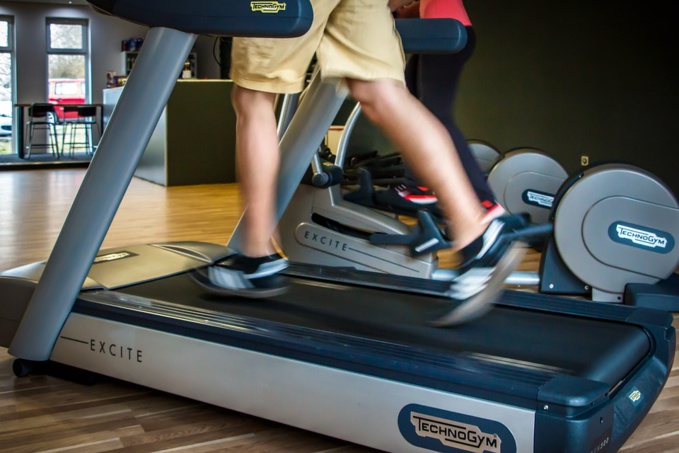According to a report prepared by Deloitte and EuropeActive (formerly known as the European Health and Fitness Association), the number of people buying fitness clubs memberships in 2016 grew in Europe by 4.4%, reaching 56.5 million people. Germany occupies the first place in Europe in terms of the number of people attending fitness clubs - there they numbered 10.1 million. The second place goes Great Britain (9.3 million people), and France (5.5 million) is at the third place. The top five also includes Italy (5.3 million) and Spain (5.1 million). In terms of coverage, Sweden ranks first, with 21.1% of the population visiting health clubs, followed by Norway (19.2%), the Netherlands (16.7%), Denmark (15.8%) and Great Britain (14.1%).
The study’s authors suggest that the increase in the number of people attending fitness clubs can be explained by expansion of affordable fitness centers and, on the other hand, increase in the number of exclusive boutique clubs. At the same time, professor of the Higher Sports School in Cologne, Ingo Froböse, says that it is unlikely that everyone who bought the membership will factually attend the fitness center. "Buying a subscription to a fitness club has become a sign of a good tone, as it used to be with game of golf or tennis", he notes.
The market of fitness-related goods and services grew by 3.1% to € 26.3 billion during this period. Thus, the European market became the largest in the world, surpassing the US (€ 23.3 billion), which was leading in 2015. Switzerland (5.8%), Germany (4.6%), Finland (4%), Sweden (3.9%) and Turkey (3.4%) showed the most significant growth. According to the study, the fitness clubs market has recently been quite actively consolidated: 17 mergers and acquisitions took place in Europe last year, and the top ten companies account for 12.2% of the market (€ 3 billion).
Member of EuropeActive’s board of directors and one of the study’s authors Herman Rutgers comments: "2016 was another year of strong growth in terms of the number of participants and the market’s volume, and operators surveyed by us expect good growth in 2017 and beyond. This shows that the products and services of our sector remain very attractive for European consumers, which allows us to be confident of reaching the goal of 80 million people by 2025". In addition, the market for online fitness-related services is expanding, according to Deloitte. Number of participants in online clubs, where textbooks and video lessons can be obtained, has reached 563,000 people, with 194,000 people purchasing a paid subscription.
The fitness industry is actively developing not only in Europe, but also in China. Report of IBIS World Research shows that the fitness industry has grown by 11.6% over the past five years, and by the end of 2016 sports clubs have earned about $ 5.8 billion. Last year alone, sales of sports goods in the country increased by 11%, to $ 27 billion.
source: europeactive.eu
The study’s authors suggest that the increase in the number of people attending fitness clubs can be explained by expansion of affordable fitness centers and, on the other hand, increase in the number of exclusive boutique clubs. At the same time, professor of the Higher Sports School in Cologne, Ingo Froböse, says that it is unlikely that everyone who bought the membership will factually attend the fitness center. "Buying a subscription to a fitness club has become a sign of a good tone, as it used to be with game of golf or tennis", he notes.
The market of fitness-related goods and services grew by 3.1% to € 26.3 billion during this period. Thus, the European market became the largest in the world, surpassing the US (€ 23.3 billion), which was leading in 2015. Switzerland (5.8%), Germany (4.6%), Finland (4%), Sweden (3.9%) and Turkey (3.4%) showed the most significant growth. According to the study, the fitness clubs market has recently been quite actively consolidated: 17 mergers and acquisitions took place in Europe last year, and the top ten companies account for 12.2% of the market (€ 3 billion).
Member of EuropeActive’s board of directors and one of the study’s authors Herman Rutgers comments: "2016 was another year of strong growth in terms of the number of participants and the market’s volume, and operators surveyed by us expect good growth in 2017 and beyond. This shows that the products and services of our sector remain very attractive for European consumers, which allows us to be confident of reaching the goal of 80 million people by 2025". In addition, the market for online fitness-related services is expanding, according to Deloitte. Number of participants in online clubs, where textbooks and video lessons can be obtained, has reached 563,000 people, with 194,000 people purchasing a paid subscription.
The fitness industry is actively developing not only in Europe, but also in China. Report of IBIS World Research shows that the fitness industry has grown by 11.6% over the past five years, and by the end of 2016 sports clubs have earned about $ 5.8 billion. Last year alone, sales of sports goods in the country increased by 11%, to $ 27 billion.
source: europeactive.eu



















